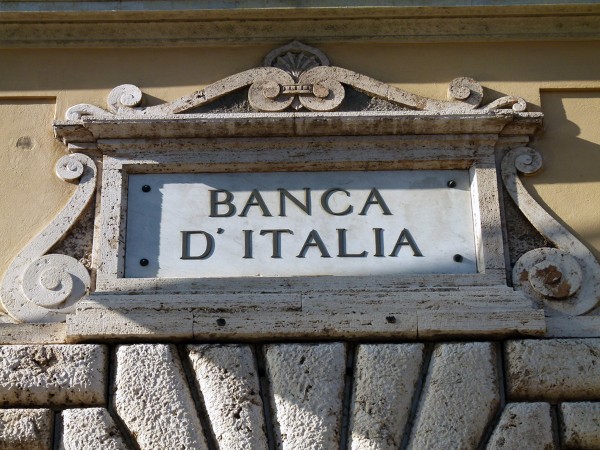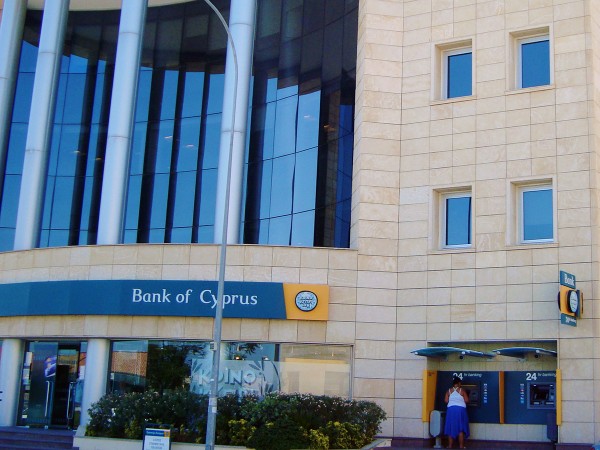 Ten years ago, the financial crisis deepened and stock markets around the world plummeted. The trigger was the collapse of Lehman Brothers, the fourth-largest US investment bank. It filed for bankruptcy on September 15, 2008. This was not the first bank failure around that time. In 2007, Northern Rock in the UK (Aug/Sept 2007) had collapsed and so too had Bear Stearns in the USA (Mar 2008).
Ten years ago, the financial crisis deepened and stock markets around the world plummeted. The trigger was the collapse of Lehman Brothers, the fourth-largest US investment bank. It filed for bankruptcy on September 15, 2008. This was not the first bank failure around that time. In 2007, Northern Rock in the UK (Aug/Sept 2007) had collapsed and so too had Bear Stearns in the USA (Mar 2008).
Initially there was some hope that the US government would bail out Lehmans. But when Congress rejected the Bank Bailout Bill on September 29, the US stock market fell sharply, with the Dow Jones falling by 7% the same day. This was mirrored in other countries: the FTSE 100 fell by 15%.
At the core of the problem was excessive lending by banks with too little capital. What is more, much of the capital was of poor quality. Many of the banks held securitised assets containing ‘sub-prime mortgage debt’. The assets, known as collateralised debt obligations (CDOs), were bundles of other assets, including mortgages. US homeowners had been lent money based on the assumption that their houses would increase in value. When house prices fell, homeowners were left in a position of negative equity – owing more than the value of their house. With many people forced to sell their houses, prices fell further. Mortgage debt held by banks could not be redeemed: it was ‘sub-prime’ or ‘toxic debt’.
Response to the crisis
The outcome of the financial crash was a series of bailouts of banks around the world. Banks cut back on lending and the world headed for a major recession.
Initially, the response of governments and central banks was to stimulate their economies through fiscal and monetary policies. Government spending was increased; taxes were cut; interest rates were cut to near zero. By 2010, the global economy seemed to be pulling out of recession.
However, the expansionary fiscal policy, plus the bailing out of banks, had led to large public-sector deficits and growing public-sector debt. Although a return of economic growth would help to increase revenues, many governments felt that the size of the public-sector deficits was too large to rely on economic growth.
As a result, many governments embarked on a period of austerity – tight fiscal policy, involving cutting government expenditure and raising taxes. Although this might slowly bring the deficit down, it slowed down growth and caused major hardships for people who relied on benefits and who saw their benefits cut. It also led to a cut in public services.
 Expanding the economy was left to central banks, which kept monetary policy very loose. Rock-bottom interest rates were then accompanied by quantitative easing. This was the expansion of the money supply by central-bank purchases of assets, largely government bonds. A massive amount of extra liquidity was pumped into economies. But with confidence still low, much of this ended up in other asset purchases, such as stocks and shares, rather than being spent on goods and services. The effect was a limited stimulation of the economy, but a surge in stock market prices.
Expanding the economy was left to central banks, which kept monetary policy very loose. Rock-bottom interest rates were then accompanied by quantitative easing. This was the expansion of the money supply by central-bank purchases of assets, largely government bonds. A massive amount of extra liquidity was pumped into economies. But with confidence still low, much of this ended up in other asset purchases, such as stocks and shares, rather than being spent on goods and services. The effect was a limited stimulation of the economy, but a surge in stock market prices.
With wages rising slowly, or even falling in real terms, and with credit easy to obtain at record low interest rates, so consumer debt increased.
Lessons
So have the lessons of the financial crash been learned? Would we ever have a repeat of 2007–9?
On the positive side, financial regulators are more aware of the dangers of under capitalisation. Banks’ capital requirements have increased, overseen by the Bank for International Settlements. Under its Basel II and then Basel III regulations (see link below), banks are required to hold much more capital (‘capital buffers’). Some countries’ regulators (normally the central bank), depending on their specific conditions, exceed these the Basel requirements.
But substantial risks remain and many of the lessons have not been learnt from the financial crisis and its aftermath.
There has been a large expansion of household debt, fuelled by low interest rates. This constrains central banks’ ability to raise interest rates without causing financial distress to people with large debts. It also makes it more likely that there will be a Minsky moment, when a trigger, such as a trade war (e.g. between the USA and China), causes banks to curb lending and consumers to rein in debt. This can then lead to a fall in aggregate demand and a recession.
Total debt of the private and public sectors now amounts to $164 trillion, or 225% of world GDP – 12 percentage points higher than in 2009.
China poses a considerable risk, as well as being a driver of global growth. China has very high levels of consumer debt and many of its banks are undercapitalised. It has already experienced one stock market crash. From mid-June 2015, there was a three-week fall in share prices, knocking about 30% off their value. Previously the Chinese stock market had soared, with many people borrowing to buy shares. But this was a classic bubble, with share prices reflecting exuberance, not economic fundamentals.
It has already experienced one stock market crash. From mid-June 2015, there was a three-week fall in share prices, knocking about 30% off their value. Previously the Chinese stock market had soared, with many people borrowing to buy shares. But this was a classic bubble, with share prices reflecting exuberance, not economic fundamentals.
Although Chinese government purchases of shares and tighter regulation helped to stabilise the market, it is possible that there may be another crash, especially if the trade war with the USA escalates even further. The Chinese stock market has already lost 20% of its value this year.
Then there is the problem with shadow banking. This is the provision of loans by non-bank financial institutions, such as insurance companies or hedge funds. As the International Business Times article linked below states:
A mind-boggling study from the US last year, for example, found that the market share of shadow banking in residential mortgages had rocketed from 15% in 2007 to 38% in 2015. This also represents a staggering 75% of all loans to low-income borrowers and risky borrowers. China’s shadow banking is another major concern, amounting to US$15 trillion, or about 130% of GDP. Meanwhile, fears are mounting that many shadow banks around the world are relaxing their underwriting standards.
Another issue is whether emerging markets can sustain their continued growth, or whether troubles in the more vulnerable emerging-market economies could trigger contagion across the more exposed parts of the developing world and possibly across the whole global economy. The recent crises in Turkey and Argentina may be a portent of this.
 Then there is a risk of a cyber-attack by a rogue government or criminals on key financial insitutions, such as central banks or major international banks. Despite investing large amounts of money in cyber-security, financial institutions worry about their vulnerability to an attack.
Then there is a risk of a cyber-attack by a rogue government or criminals on key financial insitutions, such as central banks or major international banks. Despite investing large amounts of money in cyber-security, financial institutions worry about their vulnerability to an attack.
Any of these triggers could cause a crisis of confidence, which, in turn, could lead to a fall in stock markets, a fall in aggregate demand and a recession.
Finally there is the question of the deep and prolonged crisis in capitalism itself – a crisis that manifests itself, not in a sudden recession, but in a long-term stagnation of the living standards of the poor and ‘just about managing’. Average real weekly earnings in many countries today are still below those in 2008, before the crash. In Great Britain, real weekly earnings in July 2018 were still some 6% lower than in early 2008.
Articles
- The Lehman Brothers Crash And The Chaos That Followed – Everything You Need To Know
HuffPost, Isabel Togoh (15/9/18)
- Ten years after the crash: have the lessons of Lehman been learned?
The Guardian, Yanis Varoufakis, Ann Pettifor, Mark Littlewood, David Blanchflower, Olli Rehn, Nicky Morgan and Micah White (14/9/18)
- Financial crisis 10 years on: Who are the winners and losers?
Independent, Kate Hughes (14/9/18)
- Investment winners and losers 10 years after the crash
Financial Times, Kate Beioley (14/9/18)
- Nine Lessons From the Global Financial Crisis
Bloomberg, Mohamed A. El-Erian (13/9/18)
- Lehman — why we need a change of mindset
Deutsche Welle, Thomas Straubhaar (14/9/18)
- ‘The world is sleepwalking into a financial crisis’ – Gordon Brown
The Guardian, Larry Elliott (12/9/18)
 Economists warn of new financial crisis on anniversary of 2008 crash
Economists warn of new financial crisis on anniversary of 2008 crashChannel 4 news, Helia Ebrahimi (15/9/18)
- Financial crisis 2008: Five biggest risks of a new crash
International Business Times, Nafis Alam (14/9/18)
- Carney warns against complacency on 10th anniversary of financial crisis
BBC News, Kamal Ahmed (12/9/18)
- A cyberattack could trigger the next financial crisis, new report says
CNBC, Bob Pisani (13/9/18)
Information and data
Questions
- Explain the major causes of the financial market crash in 2008.
- Would it have been a good idea to have continued with expansionary fiscal policy beyond 2009?
- Summarise the Basel III banking regulations.
- How could quantitative easing have been differently designed so as to have injected more money into the real sector of the economy?
- What are the main threats to the global economy at the current time? Are any of these a ‘hangover’ from the 2007–8 financial crisis?
- What is meant by ‘shadow banking’ and how might this be a threat to the future stability of the global economy?
- Find data on household debt in two developed countries from 2000 to the present day. Chart the figures. Explain the pattern that emerges and discuss whether there are any dangers for the two economies from the levels of debt.
 Ten years ago (on 9 August 2007), the French bank BNP Paribas sparked international concern when it admitted that it didn’t know what many of its investments in the US sub-prime property market were worth and froze three of its hedge funds. This kicked off the financial crisis and the beginning of the credit crunch.
Ten years ago (on 9 August 2007), the French bank BNP Paribas sparked international concern when it admitted that it didn’t know what many of its investments in the US sub-prime property market were worth and froze three of its hedge funds. This kicked off the financial crisis and the beginning of the credit crunch.
In September 2007 there was a run on the Northern Rock bank in the UK, forcing the Bank of England to provide emergency funding. Northern Rock was eventually nationalised in February 2008. In July 2008, the US financial authorities had to provide emergency assistance to America’s two largest mortgage lenders, Fannie Mae and Freddie Mac.
Then in September 2008, the financial crisis really took hold. The US bank, Lehman Brothers, filed for bankruptcy, sending shock waves around the global economy. In the UK, Lloyds TSB announced that it was taking over the UK’s largest mortgage lender, Halifax Bank Of Scotland (HBOS), after a run on HBOS shares.
Later in the month, Fortis, the huge Belgian banking, finance and insurance company, was partly nationalised to prevent its bankruptcy. Also the UK government was forced to take control of mortgage-lender, Bradford & Bingley’s, mortgages and loans, with the rest of the business sold to Santander.
Early in October 2008, trading was suspended in the main Icelandic banks. Later in the month, the UK government announced a £37 billion rescue package for Royal Bank of Scotland (RBS), Lloyds TSB and HBOS. Then in November it partially nationalised RBS by taking a 58% share in the bank. Meanwhile various other rescue packages and emergency loans to the banking sector were taking place in other parts of the world. See here for a timeline of the financial crisis.

So, ten years on from the start of the crisis, have the lessons of the crisis been learnt. Could a similar crisis occur again?
The following articles look at this question and the answers are mixed.
On the positive side, banks are much more highly capitalised than they were ten years ago. Moves by the Basel Committee on Banking Supervision in its Basel III regulatory framework have ensured that banks are much more highly capitalised and operate with higher levels of liquidity. What is more, banks are generally more cautious about investing in highly complex and risky collateralised assets.
On the negative side, increased flexibility in labour markets, although helping to keep unemployment down, has allowed a huge squeeze on real wages as austerity measures have dampened the economy. What is more, household debt is rising to possibly unsustainable levels. Over the past year, unsecured debt (e.g. personal loans and credit card debt) have risen by 10% and yet (nominal) household incomes have risen by only 1.5%. While record low interest rates make such loans relatively affordable, when interest rates do eventually start to rise, this could put a huge strain on household finances. But if households start to rein in their borrowing, this would put downward pressure on aggregate demand and jeopardise economic growth.
Articles
The crisis: 10 years in three chart BBC News, Simon Jack (9/8/17)
 Darling: ‘Alarm bells ringing’ for UK economy BBC News (9/8/17)
Darling: ‘Alarm bells ringing’ for UK economy BBC News (9/8/17)
Alistair Darling warns against ‘complacency’ 10 years on from financial crisis The Telegraph (9/8/17)
A decade after the financial crisis consumers are still worried Independent, Kate Hughes (9/8/17)
Bankers still do not understand complex reasons behind financial crash, senior politician warns Independent, Ashley Cowburn (9/8/17)
We let the 2007 financial crisis go to waste The Guardian, Torsten Bell (9/8/17)
Bank of England warns of complacency over big rise in personal debt The Guardian, Larry Elliott (24/7/17)
On the 10th anniversary of the global financial meltdown, here’s what’s changed USA Today, Kim Hjelmgaard (8/8/17)
Financial crisis: Ten years ago today the tremors started Irish Times (9/8/17)
 If We Are Racing to the Pre-Crisis Bubble, Here Are 12 Charts To Watch Bloomberg, Sid Verma (9/8/17)
If We Are Racing to the Pre-Crisis Bubble, Here Are 12 Charts To Watch Bloomberg, Sid Verma (9/8/17)
Videos
 The financial crisis ten years ago to the day Euronews (9/8/17)
The financial crisis ten years ago to the day Euronews (9/8/17)
 Ten years later: What really sparked the financial crisis Sky News, Adam Parsons (9/8/17)
Ten years later: What really sparked the financial crisis Sky News, Adam Parsons (9/8/17)
 Bank of England warns on household debt Channel 4 News, Siobhan Kennedy (25/7/17)
Bank of England warns on household debt Channel 4 News, Siobhan Kennedy (25/7/17)
Questions
- Explain what are meant by ‘collateralised debt obligations (CDOs)’.
- What part did CDOs play in the financial crisis of 2007–8?
- In what ways is the current financial situation similar to that in 2007–8?
- In what ways is it different?
- Explain the Basel III banking regulations.
- To what extent has the Bank of England exceeded the minimum Basel III requirements?
- Explain what is meant by ‘stress testing’ the banks? Does this ensure that there can never be a repeat of the financial crisis?
- Why is it desirable for central banks eventually to raise interest rates to a level of around 2–3%? Why might it be difficult for central banks to do that?
 The Brexit vote has caused shockwaves throughout European economies. But there is a potentially larger economic and political problem facing the EU and the eurozone more specifically. And that is the state of the Italian banking system and the Italian economy.
The Brexit vote has caused shockwaves throughout European economies. But there is a potentially larger economic and political problem facing the EU and the eurozone more specifically. And that is the state of the Italian banking system and the Italian economy.
Italy is the third largest economy in the eurozone after Germany and France. Any serious economic weaknesses could have profound consequences for the rest of the eurozone and beyond.
At 135% of GDP, Italy’s public-sector debt is one the highest in the world; its banks are undercapitalised with a high proportion of bad debt; and it is still struggling to recover from the crisis of 2008–9. The Economist article elaborates:
The adult employment rate is lower than in any EU country bar Greece. The economy has been moribund for years, suffocated by over-regulation and feeble productivity. Amid stagnation and deflation, Italy’s banks are in deep trouble, burdened by some €360 billion of souring loans, the equivalent of a fifth of the country’s GDP. Collectively they have provisioned for only 45% of that amount. At best, Italy’s weak banks will throttle the country’s growth; at worst, some will go bust.
Since 2007, the economy has shrunk by 10%. And potential output has fallen too, as firms have closed. Unemployment is over 11%, with youth unemployment around 40%.
Things seem to be coming to a head. As confidence in the Italian banking system plummets, the Italian government would like to bail out the banks to try to restore confidence and encourage deposits and lending. But under new eurozone rules designed to protect taxpayers, it requires that the first line of support should be from bondholders. Such support is known as a ‘bail-in’.
 If bondholders were large institutional investors, this might not be such a problem, but a significant proportion of bank bonds in Italy are held by small investors, encouraged to do so by tax relief. Bailing in the banks by requiring bondholders to bear significant losses in the value of their bonds could undermine the savings of many Italians and cause them severe hardship, especially those who had saved for their retirement.
If bondholders were large institutional investors, this might not be such a problem, but a significant proportion of bank bonds in Italy are held by small investors, encouraged to do so by tax relief. Bailing in the banks by requiring bondholders to bear significant losses in the value of their bonds could undermine the savings of many Italians and cause them severe hardship, especially those who had saved for their retirement.
So what is the solution? Italian banks need recapitalising to restore confidence and prevent a more serious crisis. However, there is limited scope for bailing in, unless small investors can be protected. And eurozone rules provide little scope for government funding for the banks. These rules should be relaxed under extreme circumstances. At the same time, policy needs to focus on making Italian banking more efficient.
Meanwhile, the IMF is forecasting that Italian economic growth will be less than 1% this year and little better in 2017. Part of the problem, claims the IMF, is the Brexit vote. This has heightened financial market volatility and increasead the risks for Italy with its fragile banking system. But the problems of the Italian economy run deeper and will require various supply-side policies to tackle low productivity, corruption, public-sector inefficiency and a financial system not fit for purpose. What the mix of these policies should be – whether market based or interventionist – is not just a question of effectiveness, but of political viability and democratic support.
Articles
The Italian Job The Economist (9/7/16)
IMF warns Italy of two-decade-long recessionThe Guardian, Larry Elliott (11/7/16)
Italy economy: IMF says country has ‘two lost decades’ of growth BBC News (12/7/16)
What’s the problem with Italian banks? BBC News, Andrew Walker (10/7/16)
Why Italy’s banking crisis will shake the eurozone to its core The Telegraph, Tim Wallace Szu Ping Chan (16/8/16)
If You Thought Brexit Was Bad Wait Until The Italian Banks All Go Bust Forbes, Tim Worstall (17/7/16)
In the euro zone’s latest crisis, Italy is torn between saving the banks or saving its people Quartz, Cassie Werber (13/7/16)
Why Italy could be the next European country to face an economic crisis Vox, Timothy B. Lee (8/7/16)
Forget Brexit, Quitaly is Europe’s next worry The Guardian, Larry Elliott (26/7/16)
Report
Italy IMF Country Report No. 16/222 (July 2016)
Data
Economic Outlook OECD (June 2016) (select ‘By country’ from the left-hand panel and then choose ‘Italy’ from the pull-down menu and choose appropriate time series)
Questions
- Can changes in aggregate demand have supply-side consequences? Explain.
- Explain why there may be a downward spiral of asset sales by banks.
- How might the principle of bail-ins for undercapitalised Italian banks be pursued without being at the expense of the small saver?
- What lessons are there from Japan’s ‘three arrows’ for Italy? Does being in the eurozone constrain Italy’s ability to adopt any or all of these three categories of policy?
- Why may the Brexit vote have more serious consequences for Italy than many other European economies?
- Find out what reforms have already been adopted or are being pursued by the Italian government. How successful are they likely to be in increasing Italian growth and productivity?
- What external factors are currently (a) favourable, (b) unfavourable to improving Italian growth and productivity?
 After a week of turmoil in Cyprus (see the News item Ochi, ochi, ochi) a deal has been struck between Cyprus, the EU and the IMF over a €10bn bailout for the island’s banking system. But while the deal may bring the immediate crisis to an end, the Cypriot economy could face years of austerity and depression. And there remain questions over whether the deal sends the wrong message to depositors in banks in other eurozone countries whose banking systems are under pressure.
After a week of turmoil in Cyprus (see the News item Ochi, ochi, ochi) a deal has been struck between Cyprus, the EU and the IMF over a €10bn bailout for the island’s banking system. But while the deal may bring the immediate crisis to an end, the Cypriot economy could face years of austerity and depression. And there remain questions over whether the deal sends the wrong message to depositors in banks in other eurozone countries whose banking systems are under pressure.
Unlike the original EU proposal, the deal will not impose a levy on deposits under €100,000, much to the relief of small and medium depositors. But individuals and businesses with deposits over €100,000 in the two main troubled banks (Laiki and the Bank of Cyprus) will face losses that could be as high as 40%. The precise size will become clear in the coming days.
The troubled second largest bank, Laiki (Popular) Bank, will be split into a ‘good’ and a ‘bad’ bank. The assets and liabilities of the good part will be taken over by the largest bank, the Bank of Cyprus. Thus people’s accounts under €100,000 will be moved from one to the other. The ‘bad’ part will include deposits over €100,000 and bonds. Holders of these could lose a substantial proportion of their value.
 Many businesses will be hard hit and may be forced to close. This could have serious adverse multiplier effects on the economy. These effects will be aggravated by the fiscal austerity measures which are also part of the deal. The measures are also likely to discourage further inward investment, again pushing the economy further into recession.
Many businesses will be hard hit and may be forced to close. This could have serious adverse multiplier effects on the economy. These effects will be aggravated by the fiscal austerity measures which are also part of the deal. The measures are also likely to discourage further inward investment, again pushing the economy further into recession.
And then there are the broader effects on the eurozone. The direct effect of a decline in the Cypriot economy would be tiny; the Cypriot economy accounts for a mere 0.2% of eurozone GDP. Also the effect on small savers in other eurozone countries is also likely to be limited, as people will probably be reassured that savings under €100,000 have remained protected, even in an economy as troubled as Cyprus.
But some commentators argue that the effect on large depositors in other troubled eurozone countries, such as Portugal, Spain, Greece and Italy, could be much more serious. Would people with large balances in these countries prefer to move their money to, say, Germany, or even out of the eurozone altogether? There is clearly disagreement over this last point as you will see from the articles below.
Webcasts and Podcasts
 Cyprus agrees bailout with eurozone ministers The Guardian (25/3/13)
Cyprus agrees bailout with eurozone ministers The Guardian (25/3/13)
 Cyprus bailout: Deal reached in Eurogroup talks BBC News (25/3/13)
Cyprus bailout: Deal reached in Eurogroup talks BBC News (25/3/13)
 ‘Disaster avoided’ as Cyprus agrees EU bailout deal Euronews (25/3/13)
‘Disaster avoided’ as Cyprus agrees EU bailout deal Euronews (25/3/13)
 Cyprus saved from bankruptcy Channel 4 News on YouTube, Faisal Islam (25/3/13)
Cyprus saved from bankruptcy Channel 4 News on YouTube, Faisal Islam (25/3/13)
 What are the implications of the Cyprus deal? BBC Radio 4 Today Programme, Stephanie Flanders (25/3/13)
What are the implications of the Cyprus deal? BBC Radio 4 Today Programme, Stephanie Flanders (25/3/13)
 Cyprus bailout deal: Russia riled but Germany relieved BBC News, Steve Rosenberg in Moscow and Stephen Evans in Berlin (25/3/13)
Cyprus bailout deal: Russia riled but Germany relieved BBC News, Steve Rosenberg in Moscow and Stephen Evans in Berlin (25/3/13)
 Cyprus bailout deal ‘durable’ says IMF chief BBC News, Christine Lagarde (25/3/13)
Cyprus bailout deal ‘durable’ says IMF chief BBC News, Christine Lagarde (25/3/13)
 Cyprus Bailout Deal Raises Questions: Lombardi Bloomberg, Domenico Lombardi (25/3/13)
Cyprus Bailout Deal Raises Questions: Lombardi Bloomberg, Domenico Lombardi (25/3/13)
 Minister Michalis Sarris: Cyprus paying ‘tremendous cost’ BBC Radio 4 Today Programme, Michalis Sarris (26/3/13)
Minister Michalis Sarris: Cyprus paying ‘tremendous cost’ BBC Radio 4 Today Programme, Michalis Sarris (26/3/13)
Articles
Last-minute Cyprus deal to close bank, force losses Reuters, Jan Strupczewski and Annika Breidthardt (25/3/13)
Cyprus strikes last-minute EU bailout deal The Guardian, Ian Traynor (25/3/13)
‘There is no future here in Cyprus’ The Telegraph, Nick Squires (25/3/13)
Back from the brink: EU ministers approve €10bn bailout deal at 11th-hour to save Cyprus Independent, Charlotte McDonald-Gibson and Majid Mohamed (25/3/13)
Cyprus bailout: Deal reached in Eurogroup talks BBC News (25/3/13)
Q&A: Cyprus deal BBC News (25/3/13)
The rescue of Cyprus won’t feel like one to its people BBC News, Robert Peston (25/3/13)
Lessons of Cyprus BBC News, Stephanie Flanders (25/3/13)
Cyprus bailout: Dijsselbloem remarks alarm markets BBC News (25/3/13)
Cyprus saved – but at what cost? The Guardian, Helena Smith (25/3/13)
Cyprus bail-out: savers will be raided to save euro in future crisis, says eurozone chief The Telegraph, Bruno Waterfield (25/3/13)
Cyprus’s banks have been tamed – are Malta and Luxembourg next? The Guardian, Ian Traynor (25/3/13)
Lehman lessons weigh on Cyprus talks but 1920s slump must not be ignored The Guardian, Larry Elliott (24/3/13)
Questions
- Explain what is meant by ‘moral hazard’. What moral hazards are implicit in the deal that has been struck with Cyprus?
- How does the size of the banking system in Cyprus as a proportion of GDP differ from that in other troubled eurozone countries? How does this affect the ‘contagion’ argument?
- Does the experience of Iceland and its troubled banks suggest that the Cypriot problem has nothing to do with its being in the eurozone?
- What options are open to the Cypriot government to stimulate the economy and prevent a severe recession? How realistic are these options (if any)?
- What are the likely implications of the deal for the economic relationships (as opposed to the political ones) between Cyprus and Russia and between the eurozone and Russia?
- Are there any similarities in the relationships between the weak and strong eurozone countries today and those between Germany and other countries in the 1920s and 30s?
 Banks in Cyprus are in crisis. They have many bad debts e.g. to Greece and as mortgages in a falling property market. Private-sector debts have become unsustainable for the banks. The problem is compounded by negative economic growth and large government deficits (see chart). But, as with Icelandic banks back in 2008, this means a crisis for the whole country.
Banks in Cyprus are in crisis. They have many bad debts e.g. to Greece and as mortgages in a falling property market. Private-sector debts have become unsustainable for the banks. The problem is compounded by negative economic growth and large government deficits (see chart). But, as with Icelandic banks back in 2008, this means a crisis for the whole country.
The reason is that the banking sector in Cyprus, as in Iceland and Ireland too, is large relative to the whole economy – over 8 times annual GDP (second only to Ireland in the EU). Loans to Greece alone are as much as 160% of Cyprus’ GDP and Cypriot banks were badly hit by the terms of the Greek bailout, which required creditors to take a 53% reduction (or ‘haircut’) in the value of their loans to Greece. With such a large banking sector, it is impossible for the Cypriot government alone to rescue the banks.
Cyprus thus turned to the EU for a bailout: back in June 2012. This makes Cyprus the fifth country to seek a bailout (after Greece, Ireland, Portugal and Spain). A bailout of €10 billion has just been agreed by the EU and IMF. The bailout comes with the ‘usual’ conditions of strong austerity measures of tax rises and cuts in government expenditure. But what makes this bailout different from those given to the other countries was a proposed levy on savers.
 The proposal was that people with up €99,999 in their bank accounts (of any type) would face a one-off tax of 6.75%. The rate for those with €100,000 or more would be 9.9%, including on the first €99,999. This would raise around €5.8 billion of the €10 billion.
The proposal was that people with up €99,999 in their bank accounts (of any type) would face a one-off tax of 6.75%. The rate for those with €100,000 or more would be 9.9%, including on the first €99,999. This would raise around €5.8 billion of the €10 billion.
Not surprisingly, there was a public outcry in Cyprus. People had thought that their deposits were protected (at least up to €100,000). There was a run on cash machines, which, as a result were set to deliver just small amounts of cash to cope with the excessive demand. There was huge pressure on the Cypriot government not to introduce the measure.
But the ramifications of the proposed levy go well beyond the question of justice to savers. Questions are being raised about its incentive/disincentive effects. If people in other countries in future financial difficulties felt that they might face similar levies, how would they behave? Also, there is no haircut being proposed for holders of banks’ bonds. As Robert Peston states in his first article below:
The Cypriot deal sets back the cause of the new global rules for bringing order to banking systems when crisis hits. Apart from anything else, in other eurozone countries where banks are weak, it licenses runs on those banks, as and when a bailout looms.
But getting incentives right is not easy. As the Buttonwood column in The Economist points out:
The problem is tied up with the issue of moral hazard. This can be applied to both creditors and debtors; the former should be punished for reckless lending and the latter for living beyond their means. The collapse of Lehman Brothers is seen as an example of the faulty reasoning behind moral hazard; by letting the bank go bust, the crisis was spread throughout the financial system. But rescuing every creditor (or intervening to bail out the markets every time they falter) is the reason we are in this mess.
One alternative considered by the Cyprus parliament was to exempt people with less than €20,000 in their accounts from the levy. But this was rejected as being insufficient protection for savers. Another is to exempt people with less than €100,000, or to charge people with between €20,000 and €100,000 at a lower rate or rates.
But charging less, or nothing, on deposits of less than €100,000 would make it harder to to raise the €5.8 billion required by the EU. Without alternative measures it would mean charging a rate higher than 9.9% on larger deposits. The Cypriot government is afraid that this would discourage inward investment. Russia, in particular, has invested heavily in the Cyprus economy and Russia is campaigning vigorously to limit the size of the levy on large deposits. But there is little sympathy for Russian depositors, much of whose deposits are claimed to be ‘laundered money’. The Cypriot government has been seeking financial support from the Russian government.
An alternative proposal being considered is to issue government bonds in an “investment solidarity fund” and to transfer pension funds from semi-public companies to the state. Also Russia may be willing to invest more money in Cyprus’ offshore oil and gas fields.
Agreement
A deal was struck between Cyprus and the EU/IMF early in the morning of 25 March, just hours before the deadline. For details, see the News Item Cyprus: one crisis ends; another begins.
Webcasts and podcasts
 Eurozone ministers agree 10bn euro Cyprus bailout Channel 4 News (16/3/13)
Eurozone ministers agree 10bn euro Cyprus bailout Channel 4 News (16/3/13)
 Bailout is ‘blackmail’ claims Cyprus president Euronews (17/3/13)
Bailout is ‘blackmail’ claims Cyprus president Euronews (17/3/13)
 Cyprus’s president tries to calm fears over EU bailout The Guardian (18/3/13)
Cyprus’s president tries to calm fears over EU bailout The Guardian (18/3/13)
 Cypriot bank customers reactions to savings levy BBC News (17/3/13)
Cypriot bank customers reactions to savings levy BBC News (17/3/13)
 Cyprus bailout: Parliament postpones debate amid anger BBC News (17/3/13)
Cyprus bailout: Parliament postpones debate amid anger BBC News (17/3/13)
 Cyprus parliament delays debate on EU bailout Al Jazeera (17/3/13)
Cyprus parliament delays debate on EU bailout Al Jazeera (17/3/13)
 Cyprus told it can amend bailout, as key vote postponed BBC News, Gavin Hewitt (18/3/13)
Cyprus told it can amend bailout, as key vote postponed BBC News, Gavin Hewitt (18/3/13)
 Robert Peston: Cyprus bailout an ‘astonishing mess’ BBC News, Robert Peston (18/3/13)
Robert Peston: Cyprus bailout an ‘astonishing mess’ BBC News, Robert Peston (18/3/13)
 Cyprus bailout is ‘completely unfair’ BBC Radio 4 Today Programme, Michael Fuchs and Bernadette Segol (18/3/13)
Cyprus bailout is ‘completely unfair’ BBC Radio 4 Today Programme, Michael Fuchs and Bernadette Segol (18/3/13)
 Lenders ‘doing everything you should not do’ on Cyprus BBC Radio 4 Today Programme, Alistair Darling (19/3/12)
Lenders ‘doing everything you should not do’ on Cyprus BBC Radio 4 Today Programme, Alistair Darling (19/3/12)
 Cyprus warned over bailout rejection BBC News (20/3/13)
Cyprus warned over bailout rejection BBC News (20/3/13)
Articles
Cyprus becomes fifth eurozone bailout The News International (Pakistan) (17/3/13)
Cyprus bailout deal sparks run on ATMs Irish Independent (17/3/13)
EU leaders gamble in Cyprus bank bailout BBC News, Gavin Hewitt (17/3/13)
Cyprus told it can amend bailout, as key vote postponed BBC News (18/3/13)
Q&A: Cyprus bailout BBC News (19/3/13)
Cyprus’ President Defends Bailout Deal The Motley Fool (16/3/13)
Sad Cyprus The Economist, Buttonwood’s Notebook (12/3/13)
The Cypriot bail-out: A fifth bitter lemon The Economist (30/6/12)
Analysis: Cyprus bank levy risks dangerous euro zone precedent Reuters, Mike Peacock (17/3/13)
The Cyprus precedent Reuters, Felix Salmon (17/3/13)
The Cyprus Bank Bailout Could Be A Disastrous Precedent: They’re Reneging On Government Deposit Insurance Forbes, Tim Worstall (16/3/13)
Cyprus rescue breaks all the rules BBC News, Robert Peston (18/3/13)
Cyprus and the eurozone’s survival BBC News, Robert Peston (20/3/13)
Eurogroup defends Cyprus bail-out The Telegraph (17/3/13)
Cyprus eurozone bailout prompts anger as savers hand over possible 10% levy The Guardian (16/3/13)
Cyprus’s wealth tax makes perfect sense – its rich won’t escape unscathed The Guardian, Phillip Inman (18/3/13)
The tragedy of Cyprus The Real Economy blog, Edmund Conway (16/3/13)
Damage limitation in Cyprus BBC News, Stephanie Flanders (19/3/13)
The fatal flaw in the eurozone’s not-so-cunning plan for Cyprus The Guardian, Larry Elliott (19/3/13)
Cyprus plans special fund in race to get EU-IMF bailout BBC News, (21/3/13)
Cyprus says ‘significant progress’ in debt crisis talks BBC News (23/3/13)
Background information
The Banking System in Cyprus: Time to Rethink the Business Model? Cyprus Economic Policy Review, Vol. 5, No. 2, pp. 123–130, Constantinos Stephanou (2011)
European sovereign-debt crisis Wikipedia
Questions
- What is the justification given by the Cypriot government and the EU for imposing a levy on bank deposits?
- What alternative measures could have been demanded by the EU? Why weren’t they?
- What is the significance of Russian deposits in Cypriot banks?
- Compare the benefits of the proposed levy rates with the alternative of imposing levies only on deposits over €100,000, but at higher rates (perhaps tiered).
- Explain the moral hazard issues in bailing out the Cypriot banks.
- How serious is the problem that imposing a tax on deposits in Cypriot banks might have adverse affects on the behaviour of depositors in other countries’ banks?
- How might Cypriots behave in future in regards to depositing money in banks? What impact could this have on the economy of Cyprus?
- Explain “the unholy trinity of options facing indebted nations (inflate, stagnate, default)”. Compare the effectiveness of each.
 Ten years ago, the financial crisis deepened and stock markets around the world plummeted. The trigger was the collapse of Lehman Brothers, the fourth-largest US investment bank. It filed for bankruptcy on September 15, 2008. This was not the first bank failure around that time. In 2007, Northern Rock in the UK (Aug/Sept 2007) had collapsed and so too had Bear Stearns in the USA (Mar 2008).
Ten years ago, the financial crisis deepened and stock markets around the world plummeted. The trigger was the collapse of Lehman Brothers, the fourth-largest US investment bank. It filed for bankruptcy on September 15, 2008. This was not the first bank failure around that time. In 2007, Northern Rock in the UK (Aug/Sept 2007) had collapsed and so too had Bear Stearns in the USA (Mar 2008). Expanding the economy was left to central banks, which kept monetary policy very loose. Rock-bottom interest rates were then accompanied by quantitative easing. This was the expansion of the money supply by central-bank purchases of assets, largely government bonds. A massive amount of extra liquidity was pumped into economies. But with confidence still low, much of this ended up in other asset purchases, such as stocks and shares, rather than being spent on goods and services. The effect was a limited stimulation of the economy, but a surge in stock market prices.
Expanding the economy was left to central banks, which kept monetary policy very loose. Rock-bottom interest rates were then accompanied by quantitative easing. This was the expansion of the money supply by central-bank purchases of assets, largely government bonds. A massive amount of extra liquidity was pumped into economies. But with confidence still low, much of this ended up in other asset purchases, such as stocks and shares, rather than being spent on goods and services. The effect was a limited stimulation of the economy, but a surge in stock market prices. It has already experienced one stock market crash. From mid-June 2015, there was a three-week fall in share prices, knocking about 30% off their value. Previously the Chinese stock market had soared, with many people borrowing to buy shares. But this was a classic bubble, with share prices reflecting exuberance, not economic fundamentals.
It has already experienced one stock market crash. From mid-June 2015, there was a three-week fall in share prices, knocking about 30% off their value. Previously the Chinese stock market had soared, with many people borrowing to buy shares. But this was a classic bubble, with share prices reflecting exuberance, not economic fundamentals. Then there is a risk of a cyber-attack by a rogue government or criminals on key financial insitutions, such as central banks or major international banks. Despite investing large amounts of money in cyber-security, financial institutions worry about their vulnerability to an attack.
Then there is a risk of a cyber-attack by a rogue government or criminals on key financial insitutions, such as central banks or major international banks. Despite investing large amounts of money in cyber-security, financial institutions worry about their vulnerability to an attack. Economists warn of new financial crisis on anniversary of 2008 crash
Economists warn of new financial crisis on anniversary of 2008 crash






